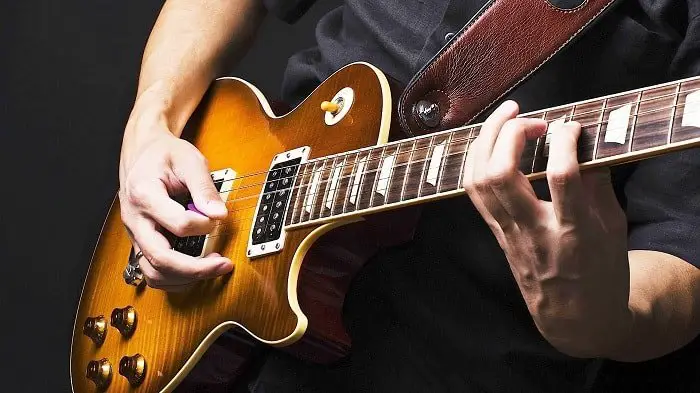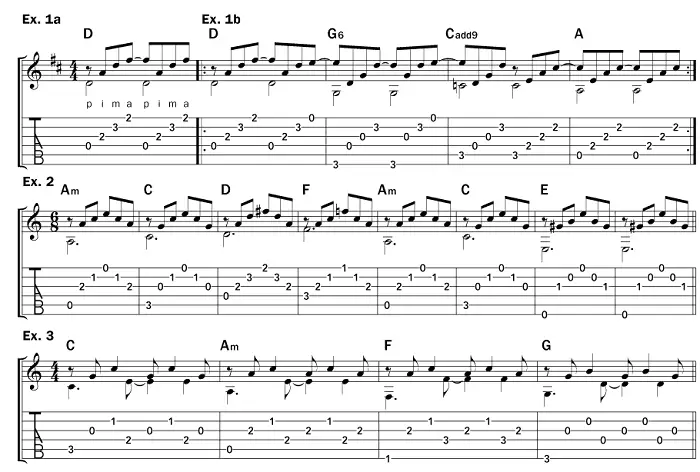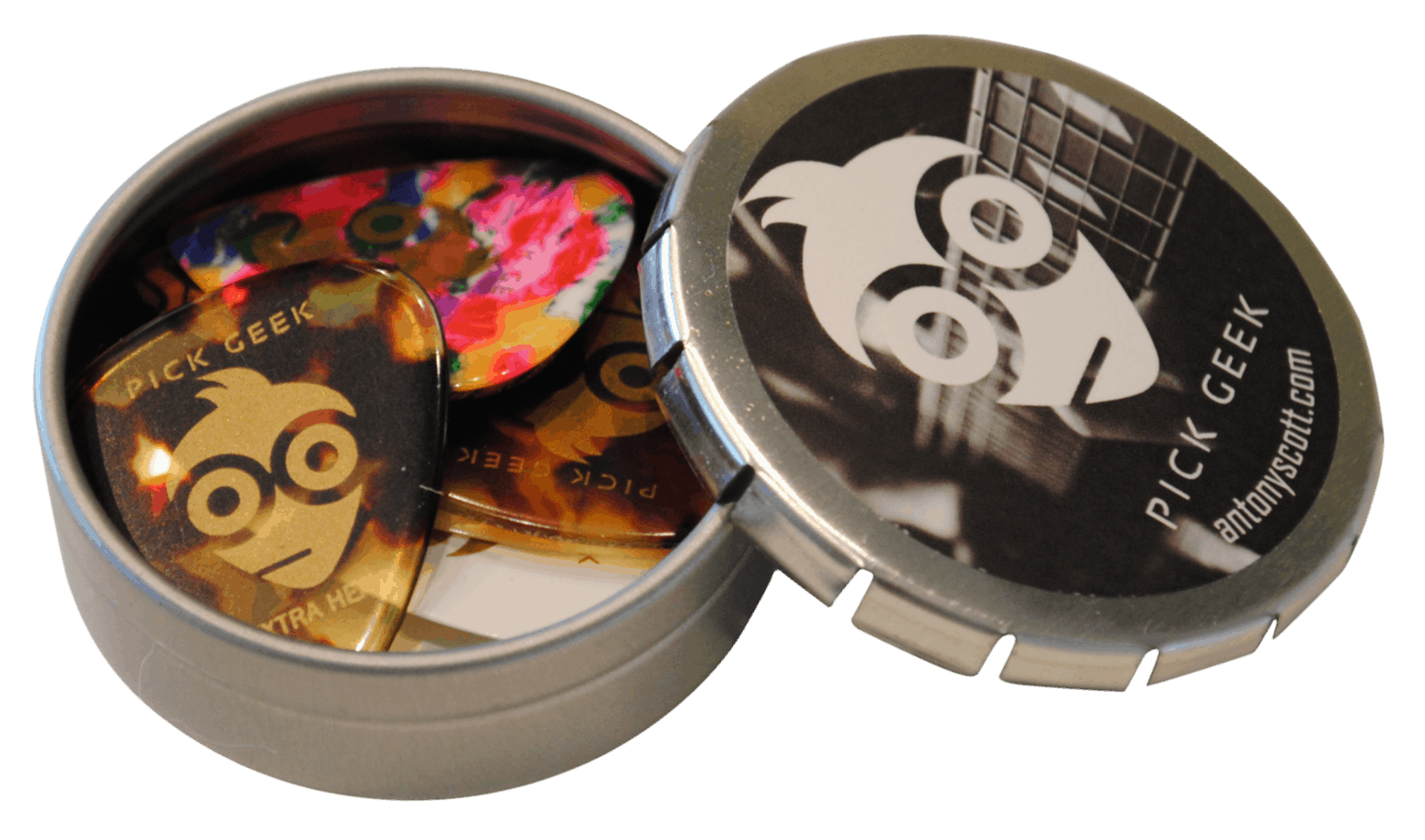As a beginner, playing guitar is all about figuring out what the main chords are, and training your left hand (assuming you are a right handed person) grab all the difficult ones.
At this time your right hand is basically idling, being held down by the left hand. As time goes by and you practice your routines, your fret hand becomes better and better.
At this point it’s time to start developing your picking skills which will allow you to play with more precision and dexterity, while also improving your technique in general.
 There are generally two types of picking technique – finger style and picking. Former is more popular with acoustic guitars while latter is more popular with electric guitars.
There are generally two types of picking technique – finger style and picking. Former is more popular with acoustic guitars while latter is more popular with electric guitars.
Each of these can be quite complex and difficult to master depending on how far you’re willing to go. In this article we will discuss some of the more basic guitar picking patters and techniques that will help you improve your skill.
Where To Start ?
Picking
Playing with a pick may appear to be simple, at the end of the day all you have to do is hit the string with a pick, right? While most basic forms of pick playing can be described in such a simple way, playing with a pick can get very complex in no time.
For now, let’s discuss two of the basic types of picking techniques that you will encounter as you develop your skills.
Top-down picking
Every guitar player starts by using top-down picking. This describes the process where you hit every string from by attacking it from the top. Beginners usually get so accustomed to this style of picking that they do everything they can to increase the speed with which they can play using this technique.
Some famous guitar players also prefer the top-down approach. One of them is James Hetfield, frontman of Metallica. He’s so good at top-down picking that he can easily play fast trash-metal riffs with no problems.
However, while it’s impressive for sure, it’s not the right way to go. At some point you need to start practicing alternate picking.

Alternate picking
Alternate picking means that you pick the string from the top and instead of returning your hand to the original position and picking from the top again, you just pick the string as you pull your hand up.
This is a more efficient technique that allows you to play faster and more precise while eliminating any unnecessary hand movement from the equation.
All of the more advanced guitar technique pretty much need a solid alternate picking foundation. If you learn to do this well, you will progress much faster when it comes to speed and accuracy. Shredding is simply impossible without alternate picking, and so is any faster paced solo you ever heard.
At first alternate picking may feel counter intuitive. After all, it’s hard to break the habit of top-down picking. Only practice solves this problem, and you can rest assured that once you figure out alternate picking, you will tend to play everything this way, even the slower and more relaxed songs.
Key for efficient alternate picking is the way you hold your pick and how you use your fingers. For best results, and least resistance, you will want to hold your pick at a certain angle. This way it will slide move faster over the strings while still picking them with the same intensity.
You build up speed by moving your wrist faster and faster. However at one point you will reach a ceiling. When that happens, you need to start coordinating your thumb and index finger (or whichever fingers you use to hold the pick). Just by utilizing the mechanics of these two fingers, you increase your speed beyond what your wrist is capable of doing.
 All of this takes a lot of time and practice. Building good habits is not easy, and takes dedications. However once you succeed, you will enter a whole new world of possibilities. Every next solo you decide to tackle will be a challenge you will most probably enjoy accepting.
All of this takes a lot of time and practice. Building good habits is not easy, and takes dedications. However once you succeed, you will enter a whole new world of possibilities. Every next solo you decide to tackle will be a challenge you will most probably enjoy accepting.
Finger style
Guitars can be played, and are most often played using a pick. However, acoustic guitar players usually like to play with their fingers. This style of playing (read our article)dates back the origins of guitar as an instrument. We are talking medieval Europe and first versions of classical guitars.
By using your fingers, you are able to engage more strings at the same time, without having to strum them. Finger style gives you enough flexibility to engage the notes you want, when you want them. This ability is what you call a picking pattern.
There’s a huge number of picking patters that are all great in their own way. Which one you will choose will depend on your skill and your personal preference. The basics of finger style picking is how you position your right hand on the strings.
The consensus is that you play your root notes on E, A and D strings with your thumb, while you play G with your index finger, B string with your middle finger, and high E string with your ring finger. This is the standard position for finger picking. Naturally there are variations, but that’s something we will cover another time.
Finger picking patterns largely depend on what kind of mood you are trying to achieve with the song, and the type of chords you are expected to play. Some chords lend themselves better to certain picking patterns more than others.
If you’re just starting to play with your fingers, it’s recommended that you stick to one finger picking pattern until you are comfortable with it. At that point you can start adding different patterns one by one. Soon you’ll be able to tackle even the most complex ones, and use several different patterns in one song.
Conclusion
This article was meant to give you an insight into different types of picking patterns and how they affect your technique and playing style. We suggest you start slow while building your speed and dexterity in controlled increments.
Nothing comes over night, and the same applies to guitar picking patterns.
